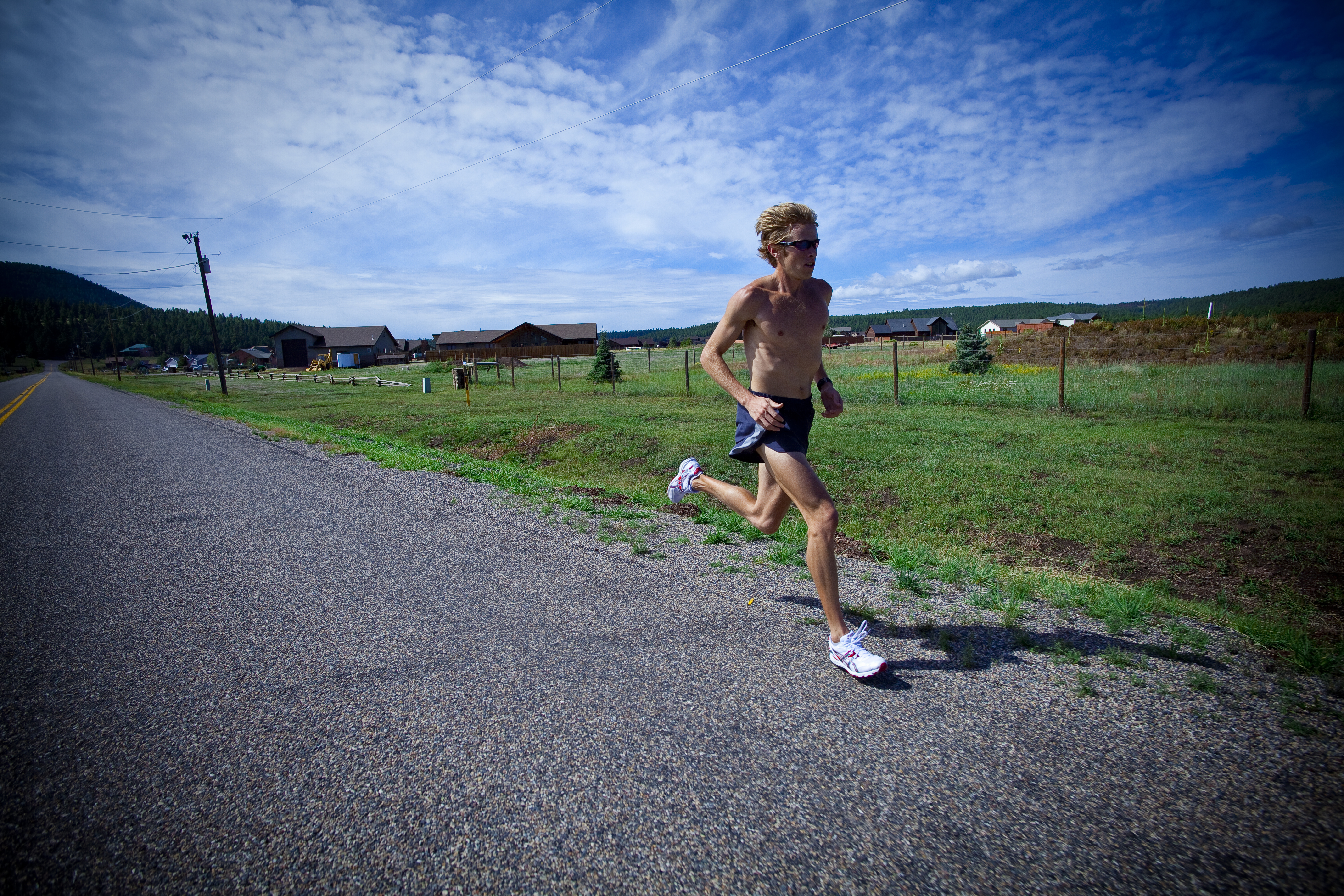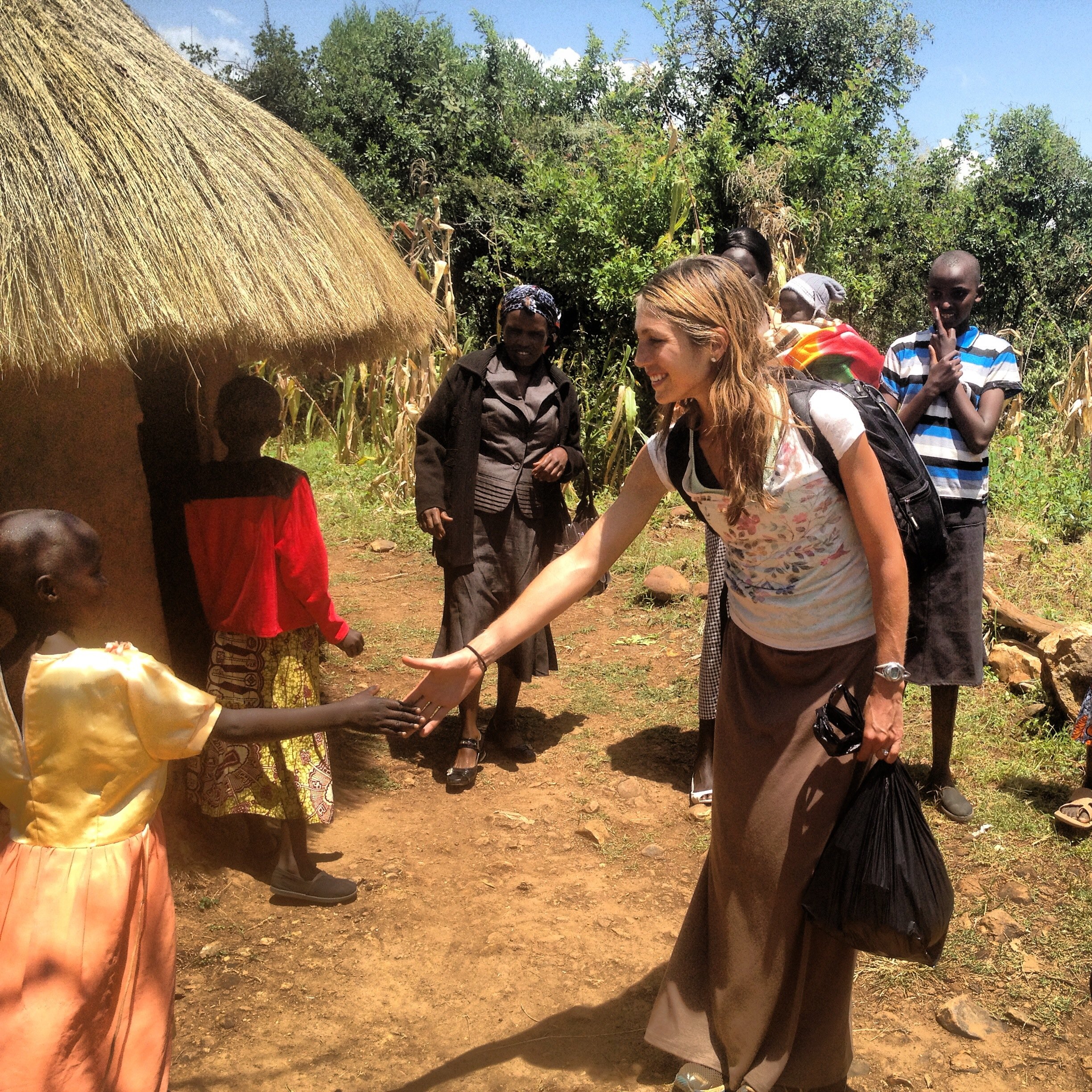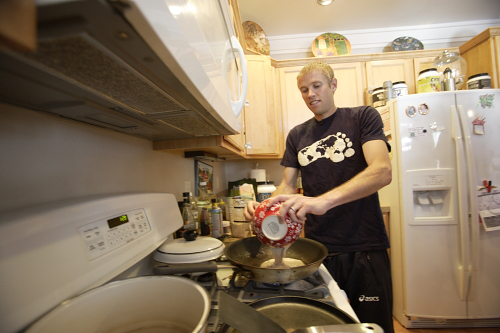Ryan and I had intended to make the pilgrimage to Iten, Kenya last February, however, Ryan’s torn quad thwarted our plans. Fortunately this time we both made it, meeting up in the Nairobi airport and seeing each other for the first time in 4 weeks. Our first day in Kenya we headed out to Wesley Korir’s home outside of Kitale to visit the hospital built by The Hall Steps Foundation. When we pulled up at the hospital, it seemed like the entire village had gathered to greet us (the women singing a song as we stepped out of the car) and thank us for bringing them the gift of health. We walked around and shook probably 250 hands of the people that were gathered, and then made sure to tell them that it was not just us but many other runners back in the US that cared about them enough to run a race or donate money so that they would experience better health. To that they cheered! It was a precious moment of seeing in a very tangible way the beneficiaries of the charity that we spent so much time and effort on from afar.
After touring the hospital, we were off to Iten to train at Lornah Kiplagat’s High Altitude Training Center. We had envisioned training with the Kenyans, but upon showing up realized we had no contacts in the area and no idea how to “join in” the training. Most of the people staying at Lornah’s trained on their own, but I was told that there was a large fartlek on Thursday mornings that was open to anyone. So, my first morning in Iten, I decided to “throw myself to the wolves” and show up at the fartlek. When I jogged to the meeting spot, it was quite a sight to see 300 lean Kenyan runners dressed in neon athletic gear lining the roads waiting for the fartlek to start (and all staring at the one crazy “mzungo” white girl who decided to join in). We all funneled into a narrow road about 4 people wide, a coach said “go” and we were off! In those moments I experienced what many back-of-the-pack marathoners talk about — having to shuffle along in the pack for the first mile until the race strings out. As we surged along the rough dirt road to the tune of 3 minutes on, 1 minute off, I soon found myself running with a Kenyan girl named Ruth, and together we moved up, passing runners who had stopped the workout and were now walking it in (common I guess, once you get dropped). Contrary to what I expected, there were a lot of up-and-coming runners out there, not just established elites, but all trying to hang with the ones at the top.
I happened to run into Ruth the next day out on an easy run, and we chatted about her hometown of Nyahururu (also home to Sammy Wanjiru, 2008 Olympic marathon champion) and how similar it is to Iten; it is at high altitude and a nice place to train. I had heard about Nyahururu because Kenya’s largest orphanage, called Heroes of the Nation, is there and was started by a member of our church. It was a place I’d been wanting to visit, and when I mentioned this to Ruth, she immediately got excited and invited me to stay at her home when she went back to visit.
As things turned out, we did go to Nyahururu, but rather than staying for a night as we planned, we stayed for a week. Staying in Ruth’s home was a crash course in Kenyan culture and a pleasure to be able to experience more intimately than we would have at a camp with mainly Western athletes. We just adapted to their routines — ate the same food, went to their team practices, shared meals at their friends’ and relatives’ homes, and even walked her daughter to school every morning. There were many things that surprised me about Kenyan runners that were different than what I expected, and many things that were just as anticipated. Though I do not claim to be an expert on Kenyan running culture which surely varies, from the people I met and interacted with, these were some of the myths that were debunked and some “secrets of Kenyan runners” I learned:
Myths:
Myth 1: Kenyans run all their runs very hard
Fact: Kenyans are not afraid to run their training runs very hard, but they are also not afraid at times to run very sloooow. Painfully slow, most afternoon runs (I wore a Garmin once and clocked us at 10:00 miles). However, the majority of morning runs I went on in Kenya were brisk compared to my usual training run pace, sometimes right from the gun at 6 am, sometimes “progressive” starting at 9:00 mile pace and progressing down to 6:30 pace uphill (at 7k feet elevation).
Myth 2: Kenyan runners eat very natural and healthy
Fact: Compared to my Californian diet that’s high carbohydrate but also high in fresh fruit, vegetables, and organic meat, I found the Kenyan diet very lacking nutritionally. Breakfast was sliced white bread with margarine and tea made with lots of sugar and some milk (which was delicious! Also was the only fluid Kenyan runners drink throughout the day, hydration doesn’t seem to be a concern). Lunch and dinner were both a mound of rice, corn mush, or white potatoes, with a small side of gristly meat or vegetables cooked in lard (“cooking fat”, what everything is cooked in, including the delicious fried “chapatti” flat breads). Meat or vegetables were served more as a condiment than a part of the meal. With the exception of Lornah’s camp, which served a buffet including plentiful meat and veg for our Western stomachs. To be honest, I didn’t feel much different training off of their diet of pure carbohydrate (though I did have stashes of beef jerky, nuts, and chocolate that I would continually dip into). I think it shows that you can attack nutrition a lot of different ways and still be successful.
Myth 3: All Kenyan children run to school, which is why Kenyans are faster
Fact: Though I think this was the experience of some of the best Kenyan runners growing up, only once did I see a few children running to school, and I never saw any running home from school, but walking. From what I gather, running to school is done out of necessity to avoid being late, which is why rarely do you see them running home. Children did join in for a bit when you ran by them, even if they were carrying backpacks, and seemed to enjoy it.
Kenyan Secrets:
Their belief in themselves: I was amazed at how confidently most of the Kenyan runners talked. They always expected the best in their training and upcoming races, and were very confident that their training plan was going to get them to their goals. They also don’t believe it’s possible for a white person to beat them — I learned this really quick on the track when I went to the front and all of a sudden started a race! After the workout, the coach had me share with the group my PRs and then said, “You see, just because someone is mzungo doesn’t mean they can’t beat you, you still have to try hard”. Ryan and I were cracking up! I would finish a workout that I didn’t find that impressive, and everyone would be saying, “wow, very strong mzungo!” Their expectations of me were very low!
Training in groups: It is common knowledge that the Kenyans train in groups, but seeing it play out made me realize how they are able to develop so many high level athletes. These groups are coed, so the girls basically try to hang onto the pack of guys as long as they can on training runs, people dropping off as the run goes on. Even at the track workouts I went to, there was an “A group” of the best guys, a “B group” of the next best, and a “C group”, of the women with some guys. You constantly have others pushing you to your limits. I feel like in the US our culture is a bit more conservative; runs are more recovery and conversational, with the intention of staying injury free and not over-training. For every one Kenyan that makes it to a high level there are likely others that get injured or over-train along the way, but you can see why it is a system that pushes the envelope and develops high level athletes.
Support and a Simple Lifestyle: I joke that elite Kenyan women runners have it made. You can hire a male pacemaker for a workout, going as far as 25 miles with you, for $2. You come home to get a deep tissue massage, an hour and a half costs $5. You have a live-in “house girl” who cleans the house, does your laundry, buys groceries, cooks the meals, takes care of your children, all for $1-$2 a day. Your job is to run hard and recover — period. The men have it the same, either a wife that takes care of most things or a house girl that does. Life is simple there: even the wealthiest homes I went to didn’t have internet, but there is almost always a TV. Runners just eat, sleep, and lay around and wait for the next run. I’m naturally a busy-body, so this was an adjustment for me, but you get used to it and start to look forward to simpler things in life, such as the afternoon chai or dinner at a relative’s house.
Aggressive training: One of the mindsets I really liked that most Kenyans had was that they always saw challenging training through the lens of being a benefit to them. For example, we would do a very hard hilly run the day before a track workout, something you would rarely see someone doing in the US. We would see it as taking away from the hard session the next day, but they don’t think about that, they just say “runs like today in the hills make your legs strong!”
I left my summer in East Africa a lot fitter, a shade darker, clothes stained from the all pervasive red dirt, and my craving for adventure filled. I have been challenged in my approach to training, in my American cultural habits, and by coming face to face with human need. I have made new friends and am inspired by the concept of hospitality and family I experienced. When I first arrived I was scared to ride (helmetless) on the back of a “boda-boda” (motorcycle taxi), thinking it stupid and dangerous. By the end I was taking them every chance I could — Africa has a way of mellowing you out. You just sit back as you bump along on the rutty pot-holed roads and enjoy the ride. I hope to be back soon!
Thanks for reading,
Sara





